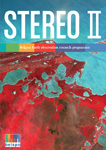|
Organization
Duration of the research: 2007-2013
Objectives
STEREO II's strategic goal was to develop an autonomous Belgian earth observation expertise of an international standard as a contribution to the knowledge economy. This is reflected in the following aims:
- Consolidating Belgium’s EO potential. This has to be achieved by:
- ensuring Belgium can produce and deploy independently information that is crucial for its policy-making (at federal, regional and municipal level) and meeting its international commitments;
- putting Belgium definitely on the map as an international centre of competence in a number of niches;
- consistently deploying earth observation as a common technique in the greatest number of disciplines, organisations, companies and social realms
- Promoting innovation;
- Creating the capacity Belgian organisations need to ensure they are involved as much as possible in international research programmes and European and international EO activities;
- Lending support to the Belgian EO infrastructure;
- Developing an extensive form of interaction with users.
Description
Thematic priorities
The thematic research priorities were as follows:
- Global monitoring of vegetation and evolution of terrestrial ecosystems;
- Environmental management (water, soil, forests, agriculture, coastal areas, urban areas and suburban areas);
- Health and humanitarian aid;
- Security and risk management.
Programme structure
The four-part programme comprised:
1. Actual scientific research
The scientific research covered two types of projects: thematic projects and satellite projects.
Thematic projects
This refers to major projects covering 3 to 5 years aimed at basic research and the development of applications. The research is conducted via partnerships involving 2-5 research teams (from Belgium and Luxembourg), whether or not rounded out by (an) international team(s).
Satellite projects
This involves small-scale projects, associated with thematic projects, covering 12-24 months for individual research teams or partnerships, comprising of 2 research teams from Belgium and Luxemburg whether or not rounded out by an international team. There are four types of satellite projects:
- Spin-off projects take a closer look at a specific problem or a new line of inquiry that emerged from a thematic project, a centre of expertise from the current or previous STEREO programme, a VG, an ORFEO project or a SSD project featuring earth observation;
- Innovation projects allow expert knowledge to be built up on the basis of new methods, technologies and instruments. Emphasis is on risky projects that do not necessarily have to yield an immediate positive result. Cross pollination with other technologies such as telecommunication or computer vision is a plus;
- Support for the development and exploitation of "Belgian" instruments (APEX, Pegasus, …) , e.g. via dedicated airborne campaigns;
- Shared-cost activities allow Belgian project partners, partners who have been selected on the basis of an external assessment for national, international or bilateral programmes, to be co-funded.
2. Development of products and services
This refers to three types of projects aimed at the transfer of technology and knowledge for the development of pre-operational products and services:
- partnerships between scientific partners and Belgian, Luxembourgian or international (such as UNESCO) administrations, or NGOs headquartered in Belgium or Luxembourg;
- partnerships between scientific partners and companies in Belgium or Luxembourg;
- partnerships between scientific partners on the one hand and Belgian, Luxembourg or international administrations, or NGOs headquartered in Belgium or Luxembourg together with companies in Belgium and Luxembourg on the other hand.
3. Scientific support
The last two components of the STEREO programme were primarily coordinated by the Earth observation helpdesk, the EODesk. The scientific support comprised:
- services to the community of users;
- maintaining and extending the Belgian Earth Observation Platform and EOEdu websites, which offered the expert user of Earth observation data relevant and up-to-date information. and helped familiarising potential users with the fast growing world of remote sensing;
- buying and archiving remote sensing data for the Belgian Science Policy Office's research programmes (such as, STEREO, Sustainable development,...);
- lending support to the adaptation of Belgian operational services.
4. Exploitation and promotion
The exploitation and promotion of remote sensing is the second cornerstone of the services offered by the EODesk:
- developing and distributing its own teaching products, primarily intended for the higher secondary education sector;
- participating in production development by third parties (school text book, atlas, artistic projects,...);
- making EO opportunities, based in particular on the results of research projects within the STEREO programme, known to a wide public and with the help of contemporary media systems
